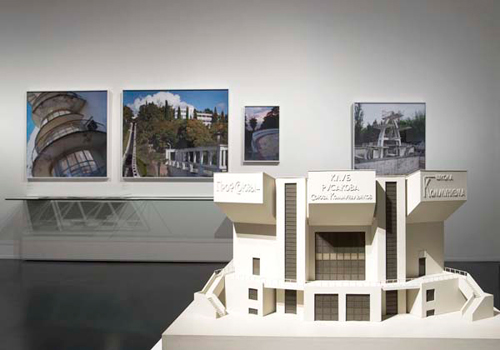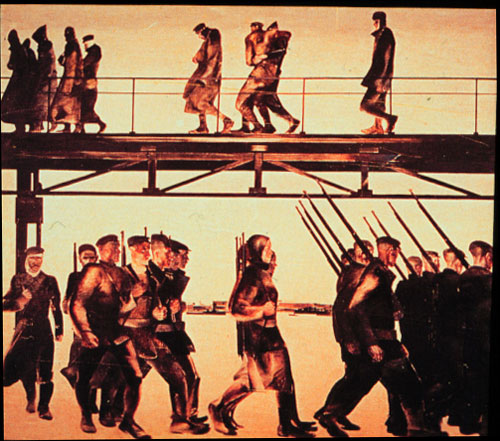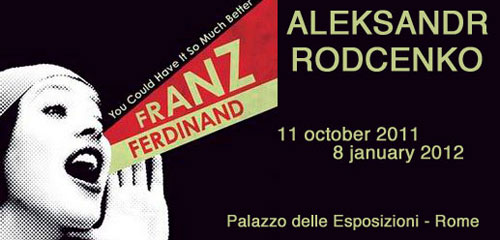Until the 15th of April, the CaixaForum in Barcelona is showing an interesting exhibition about the architecture and vanguard art of the Soviet Union between 1915 – 1935. The show is made up of 250 photographs, drawings and models which belong to Moscow´s Schusev State Museum of Architecture, and the Costakis collection from The Thessaloniki State Museum of Contemporary Art.

This exciting new exhibition focuses on a period of major urban and architectural development in the ex-Soviet Union. The era starts with the arrival of Stalinism – a time of high political contention and violence, but also of economic growth, and the birth of the ideals of proletarian revolution, which sought to break with the chains of oppression and global poverty.
During this period of growth, the Soviet cities were redesigned according to a political project of transforming the once agrarian society into an industrial one. Huge central buildings of power sprung up, as well as wide avenues, and the Moscow underground. The architecture, which was heavily influenced by the harsh lines of constructivism and rationalism, was designed to reflect the strength and rectitude of Social Realism, and became the hallmark of the time.
Constructivism was born in the Soviet Union with the October Revolution, which sparked the belief in a new, utopian society, where art and politics combine for an ideal society. So it was that Kasimir Malevich coined the term constructivism to describe the work of architect Alexander Rodchenko. It was a conceptualisation of art as a service for the revolution; the aesthetic of architecture was based on a massive social objective whereby the imagination of an industrial society was joined with the goal of economic development – machinery, technology and functionalism. The influence of constructivism can be seen in all the artistic vanguards – such as Cubism and the modern architecture of the 50s and 60s.
One particular point of interest is the model of the Soviet pavilion for the Universal Exposition of Decorative Arts of Paris (1923), produced by Konstantin Malnikov, where you can identify the elements of constructivism which were separate from functionalism. During this same period there were various interesting projects which were never put into place, due to the decisions of the centralised government, the bureaucratisation of the revolution and political censorship. Meanwhile, some ventures were outright mad, such as the project of the Soviet Palace at the the end of the 30s – a skyscraper which would serve as the central meeting point for the world´s communist leaders, along with a gigantic statue of Lenin pointing towards the future.
For more information: http://obrasocial.lacaixa.es/nuestroscentros/caixaforumbarcelona/construirlarevolucion_es.html
 Nancy Guzman
Nancy Guzman
This is an interesting exhibition which uses stunning photography to exhibit Russian constructivism – amongst which is the work of British photographer Richard Pare, taken between 1992-2010. So if you find yourself in Barcelona, don´t miss out on a trip to CaixaForum. And for a good night´s sleep, rent an apartment in this beautiful, cultural city.

 English
English Translated by: Poppy
Translated by: Poppy


